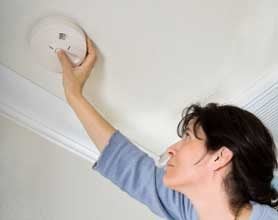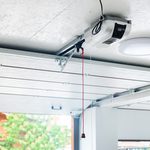Everything You Need to Know About Smoke Alarms
Smoke alarms come with various features, so choosing the right one can be difficult. Consider some of the following points when selecting a new alarm.

Power
Smoke alarms can be battery operated, electrically powered, or both. If you install an alarm that runs on electricity, you should have a battery back-up in case of power failures.
Ionization or Photoelectric
Ionization alarms may respond slightly faster to flaming-type fires, while photo-electric alarms may be quicker at detecting slow, smoldering fires.
Pause/Hush button
Smoke alarms with a pause button are great as they allow you to temporarily silence an alarm without disconnecting the power source (removing the battery). The only time you should remove the battery is when it’s time to replace it with a new one-at least once a year or when the low-battery warning sounds or the alarm doesn’t work when tested.
Location
You should install smoke alarms on every floor of your home, especially outside sleeping areas. Smoke rises, so it’s best to install alarms on the ceiling. Otherwise, install it as high up on the wall as possible. And avoid putting alarms too close to bathrooms and heating and cooking appliances.
Testing
You need to check smoke detectors monthly by pressing the “test” button to make sure they still work. If they don’t, change the battery and test again. Still not working? It may be time to replace your alarm-something you should do every 10 years.
Batteries
Change batteries at least once a year, or whenever the low-battery warning goes off. Don’t take the batteries out of your detector to use elsewhere. Should a fire occur, without that alarm, you and your family may not have enough time to escape.
If you enjoyed this article, be sure to sign up for our weekly health newsletter and receive more articles on health and well-being.



